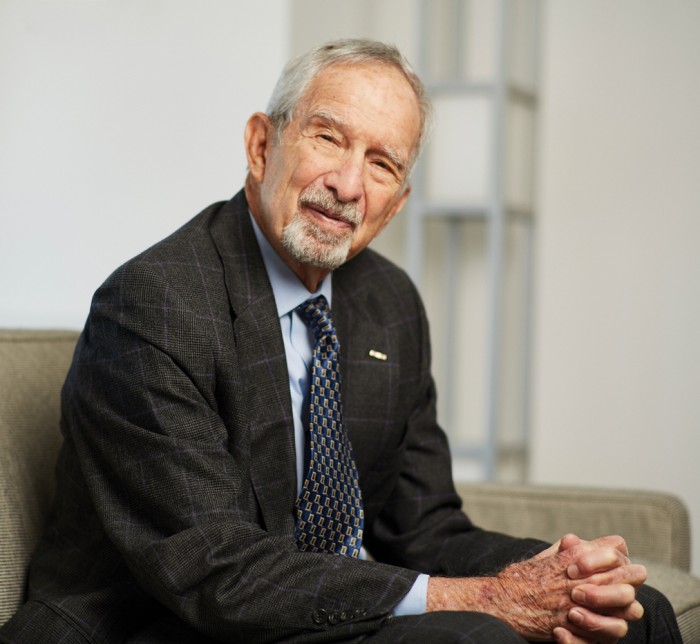Ed Roos’s connection with MIT spans a remarkable seven decades, starting with his undergraduate studies in the 1940s and continuing today through his generous philanthropy. Roos studied chemical engineering while participating in MIT’s then-required military training. During World War II, he found himself traveling from the engineering lab to the battlefields of Europe, where he served as a flamethrower expert. Determined to finish his degree, he campaigned to leave the army and returned to MIT.

Upon graduation, Roos briefly worked as an engineer at Esso (which later became Exxon) before making his way back to his hometown of Rockville Centre, New York, to help his ailing father with his real estate company. He credits the analytical skills he learned at MIT with steering him toward success in his new field. “MIT taught me how to think,” he says.
Chemical engineering has remained close to Roos’s heart even though life took him on a different path. “I donate so I can help support the chemical engineering department at MIT and the students who might not have been able to attend MIT without financial help,” he explains. In addition to establishing a professorship and fellowship, he has set up a number of charitable remainder annuity trusts. For Roos, there are many benefits to such trusts: “You’re giving your money to an organization that uses it effectively, you get a tax benefit for the gift, and you can even designate your family and friends, instead of yourself, to benefit from the income,” he says. “I enjoy supporting the growth and continued health of this outstanding Institute.”
Please consider your own gift to MIT.
For information, contact Amy Goldman: 617-715-2932; goldmana@mit.edu.
Or visit giving.mit.edu.
Keep Reading
Most Popular
Large language models can do jaw-dropping things. But nobody knows exactly why.
And that's a problem. Figuring it out is one of the biggest scientific puzzles of our time and a crucial step towards controlling more powerful future models.
The problem with plug-in hybrids? Their drivers.
Plug-in hybrids are often sold as a transition to EVs, but new data from Europe shows we’re still underestimating the emissions they produce.
Google DeepMind’s new generative model makes Super Mario–like games from scratch
Genie learns how to control games by watching hours and hours of video. It could help train next-gen robots too.
How scientists traced a mysterious covid case back to six toilets
When wastewater surveillance turns into a hunt for a single infected individual, the ethics get tricky.
Stay connected
Get the latest updates from
MIT Technology Review
Discover special offers, top stories, upcoming events, and more.